
Henry Montagu, 1st Earl of Manchester was an English judge, politician and peer. He is mainly remembered today as the judge who sentenced Sir Walter Raleigh to death.

Thomas Herbert, 8th Earl of Pembroke and 5th Earl of Montgomery,, styled The Honourable Thomas Herbert until 1683, was an English and later British statesman during the reigns of William III and Anne.

Thomas Parker, 1st Earl of Macclesfield, was an English Whig politician who sat in the House of Commons from 1705 to 1710. He was Lord Chief Justice from 1710 to 1718 and acted briefly as one of the regents before the arrival of King George I in Britain. His career ended when he was convicted of corruption on a massive scale and he spent the later years of his life in retirement at his home, Shirburn Castle in Oxfordshire.
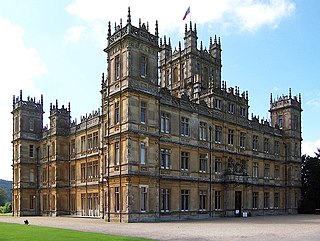
Highclere Castle is a Grade I listed country house built in 1679 and largely renovated in the 1840s, with a park designed by Capability Brown in the 18th century. The 5,000-acre (2,000 ha) estate is in Highclere in Hampshire, England, about 5 miles (8 km) south of Newbury, Berkshire, and 9.5 miles (15 km) north of Andover, Hampshire. The 19th-century renovation is in a Jacobethan and Italianate style produced by architect Charles Barry. It is the country seat of the Earls of Carnarvon, a branch of the Anglo-Welsh Herbert family.
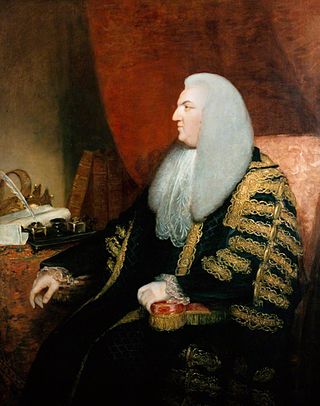
Fletcher Norton, 1st Baron Grantley, PC was an English lawyer and politician who sat in the House of Commons from 1756 to 1782 when he was raised to the peerage as Baron Grantley.

John Manners, 8th Earl of Rutland, was an English politician who sat in the House of Commons from 1640 until 1641 when he inherited the title Earl of Rutland on the death of his second cousin George Manners, 7th Earl of Rutland.

Henry Herbert, 1st Earl of Carnarvon PC, known as The Lord Porchester from 1780 to 1793, was a British Whig politician who sat in the House of Commons from 1768 to 1780 when he was raised to the peerage as Baron Porchester. He served as Master of the Horse from 1806 to 1807 in the Ministry of All the Talents headed by Lord Grenville.
Sir William Coningsby was an English Member of Parliament and a Justice of the King's Bench.
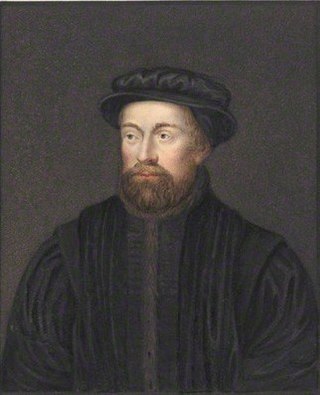
Sir John Baker was an English politician. He served as Chancellor of the Exchequer from 1545 to his death, having previously been Speaker of the House of Commons of England.
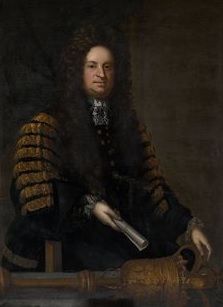
Robert Rochfort was a leading Irish lawyer, politician and judge of the late seventeenth and early eighteenth centuries. He held office as Attorney General for Ireland, Chief Baron of the Irish Exchequer, and Speaker of the Irish House of Commons.
Sir John Temple was an Irish politician, Speaker of the Irish House of Commons and Attorney General for Ireland. He was the great-great-grandfather of the distinguished statesman Henry John Temple, 3rd Viscount Palmerston. His descendants in the female line include the famous poet Lord Byron.

Sir Heneage Finch was an English lawyer, Member of Parliament, and politician who sat in the House of Commons at various times between 1607 and 1626. He was Speaker of the English House of Commons in 1626.

Sir Robert Sheffield was an English lawyer and Member of Parliament. He was Speaker of the House of Commons between 1512–1513.
Thomas Howard, 14th Earl of Suffolk, 7th Earl of Berkshire was a British peer, styled Hon. Thomas Howard until 1779.
Colonel Richard Fitzgerald was an Irish Member of Parliament.
Sir Richard Levinge, 1st Baronet was an Irish politician and judge, who played a leading part in Irish public life for more than 30 years.
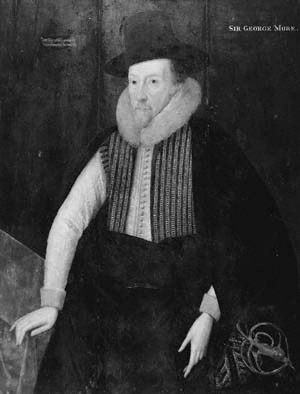
Sir George More was an English courtier and politician who sat in the House of Commons at various times between 1584 and 1625.

Hon. Nicholas Herbert was a British politician who sat in the House of Commons between 1740 and 1774 and a member of the Herbert family. He became the Treasurer of Princess Amelia of Great Britain, of the Royal House of Hanover, in 1757.
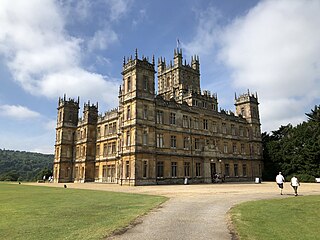
Robert Sawyer Herbert of Highclere Castle, Hampshire, was a British politician who sat in the House of Commons for 46 years from 1722 to 1768.
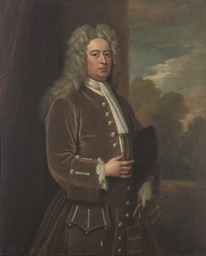
Dudley North of Glemham Hall, Little Glemham, Suffolk was a British landowner and Tory politician who sat in the House of Commons from 1710 to 1730. He was a cousin of Lord North, the British prime minister who later lost the American War of Independence.

















